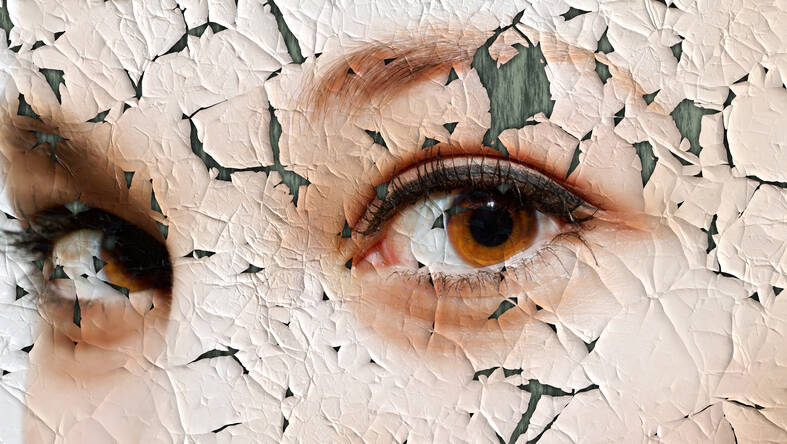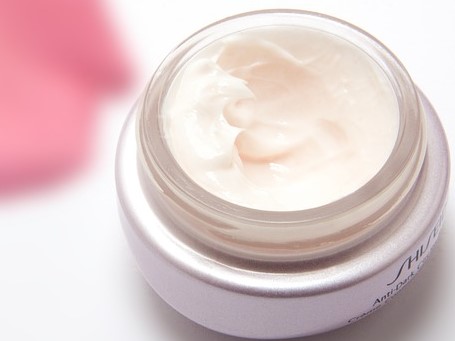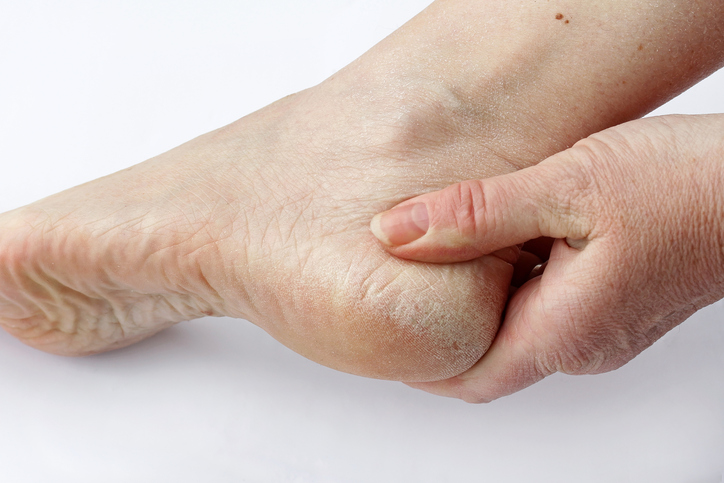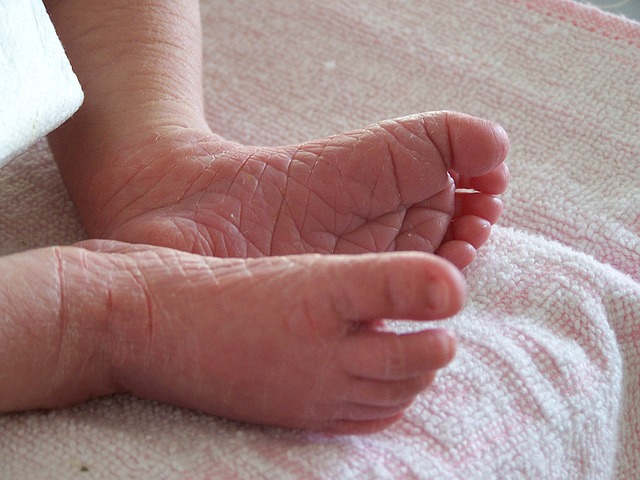- wikiskripta.eu/ - Dermatitis seborrhoica
- wikiskripta.eu
Dry skin: what are the most common causes of dry skin?

Dry skin is caused, for example, by the weather. Another example is the effect of chemicals and hygiene needs. It is dried out by excessive hygiene. Another group consists of diseases - not only diseases of the skin, but also of other parts of the body.
Dry skin can be a manifestation of genetic predispositions. Some people have more dry skin and other people have more oily skin.
Self-stasis refers to a condition of reduced sebum production. This causes the skin to dry out.
Dry skin is also caused by a lack of minerals or vitamins in the body and also by dehydration. Age also has an effect on the skin. As the skin ages and loses its natural elasticity and overall condition, it becomes drier. This phenomenon is best observed on the facial skin where wrinkles form.
The most common manifestations of dry skin are:
- cracking of the skin
- cracks are present
- scales on the skin (e.g. white), peeling off
- thickening of the skin
- itching, pinching, burning
- redness indicates inflammation
- may become wet when inflamed
Environmental influence
Extremely hot, cold, dry external environment and windy weather also dry out the skin. In addition to the weather, air conditioning has a similar effect. In this case, moisturizing, hydrating creams should be used.
The skin that is exposed to direct exposure to the elements suffers the most. Dry skin is mainly on the face, nose, ears, around the eyes. Alternatively, the skin of the hands and fingers becomes dry.
It can also be caused by irritants. Frequent washing, bathing in hot water, disinfectants containing alcohol, as well as some soaps and other cosmetic products also have a negative effect.

Workers in occupations that require frequent hand washing often have dry and cracked skin on their hands. Sometimes the skin becomes extremely dry and unpleasant sensations, pain in the form of burning, stinging are associated.
Increased skin care is necessary to prevent the skin from drying out and subsequent complications. Cracking and inflammation of the skin can be an example of these complications.
Frequent moisturizing, creaming is important. Adequate drinking regime should also be considered.
Drying of the skin in diseases
Dry skin can be a symptom of a disease. Most often, dry skin occurs in skin diseases. But as a symptom, it also manifests itself in diseases of other body systems.
One of the causes is psoriasis
In psoriasis, dry skin is the main sign of the disease. Psoriasis is a non-infectious skin disease that is congenital. Thus, a person cannot influence its occurrence. It is professionally called psoriasis.
In psoriasis, a dry and scaly surface forms on the skin. This occurs especially where the skin does not renew itself as regularly as on other parts of the body. Examples of this are dry skin around the joints, elbows, back and often on the scalp. You can read more about psoriasis in a separate article.
Dandruff
Dandruff, which is actually dead skin scales, is also a skin disease. Dandruff is common on the body, but the amount of dandruff is high and visible. Dandruff most often affects people in the hair, even if the skin is too oily.
Fungal skin diseases

A skin disease that is characterised by dry skin, itching and redness is mycosis fungoides. This is a fungal disease caused by fungi. Well-known diseases include Pityriasis versicolor.
Mycosis most often affects areas that are exposed to excessive moisture, such as in work shoes. Mycosis and dry skin occurs on the feet and on the skin between the toes, but also on the heel.
An example of other skin diseases is seborrhoeic dermatitis. It occurs most commonly in the scalp, but also in the nose, underarms and sometimes on the chest. It is an inflammatory disease.
Other diseases that present with dry skin
Some diseases of the immune system also manifest themselves on the skin, such as eczema. This is an example of atopic eczema. It is an immune-mediated disease that is caused by a genetic abnormality and also manifests itself in itchy skin.
Sometimes it can be a symptom of irritation or inflammation of a nerve. The manifestation is dry skin that is also smooth. Hair and nails are extremely brittle in this nerve disease.
The condition of the skin also reflects the function of the kidneys. In kidney disease, dry skin is also a symptom. This is particularly the case in alcoholic neuritis caused by excessive alcohol consumption. Smoking has a negative effect on the skin.
People suffering from diabetes also have a problem with dry skin. It is also caused by diabetic neuropathy. This is an affection of the nerves in diabetes, specifically their structure and function.
Since the skin is also very dependent on blood circulation, it is affected by several diseases of the veins and vascular system. For example, dry skin is typical of coronary artery disease of the lower limbs, where the legs are underblooded and the skin is dry and also loses hair.
The so-called tibial ulcers are also caused by disorders of the veins or arteries. There is a chronic defect in the skin, with subsequent death of this tissue and, in the last stage, decomposition.
The lack of hormones in the body, for example in hypothyroidism (thyroid disorder), is also reflected in the skin, which is only partially dry at first. If the disease progresses further, the dry skin even peels off and can become yellowish.
Dry skin is also present in hyperthyroidism. Hyperthyroidism is actually a condition in which the thyroid gland produces an excess of hormones. Symptoms such as dry skin, even on the head, brittle and brittle hair, thickening of the skin on the legs and feet are present. In addition, thyroid disease can also manifest itself in the weight, either by an increase or, on the contrary, by a loss.
Dry and rough skin is also manifested by a metabolic disease called phenylketonuria. This is an inherited disease caused by a disorder of aromatic acid metabolism, where the conversion of amino acids does not occur.
Dry skin is also related to dehydration and excessive fluid output from the body. This occurs with diarrhoea and vomiting. It occurs, for example, with inflammatory bowel disease, which accompanies diarrhoea and vomiting.
The skin can also become dry if there is a lack of nutrition and nutrients or if the diet is inappropriate. This is particularly common in eating disorders such as anorexia. Anorexia is a mental illness and eating disorder. The person refuses food and so deprives the skin of important nutrients or vitamins.
In this disease, bouts of excessive eating alternate with bouts of vomiting or diarrhea.
Dry skin in children

In newborn babies and infants, the skin is dry because it has not yet developed the ability to bind water. The sebaceous glands do not perform their function to the full. The protective function must develop sufficiently and until then, increased care is needed.
The skin of children is sensitive, more so than that of an adult. Therefore, a careful selection of hygiene products and equipment is recommended. Adequate protection of the skin with regard to the weather is also important.
Dehydration in children develops rapidly. Dry skin, dry lips may be its first manifestation. Drinking regime should be observed, with increased fluid loss with exertion and increased fluid loss. Higher fluid loss occurs in hot weather, with fever, vomiting or diarrhea.
But even in the childhood period, other causes should be thought of. A specialist examination is needed if problems persist, worsen, complications or general symptoms are associated.
Video on the most common causes of dry skin
Diseases with symptom "Dry skin"
- Acne
- Alopecie
- Arthrosis
- Atopic eczema
- Autoimmune thyroiditis - Hashimoto's disease
- Avitaminosis
- Bulimia
- Celiac Disease
- Anorexia - Mental anorexia
- Hyperparathyroidism and hypoparathyroidism
- Hypothyroidism - reduced thyroid function
- Leprosy - Leprosy
- Menopause
- Fungal Infection of Nails and Toenails
- Phenylketonuria
- Psoriasis
- Psoriatic arthritis
- Scabies
- Tiber ulcer
- Ulcerative Colitis
- Diabetic neuropathy
- Scleroderma
- Seborrheic dermatitis - Seborrhea
- Sjögren's syndrome
Interesting resources
Related










